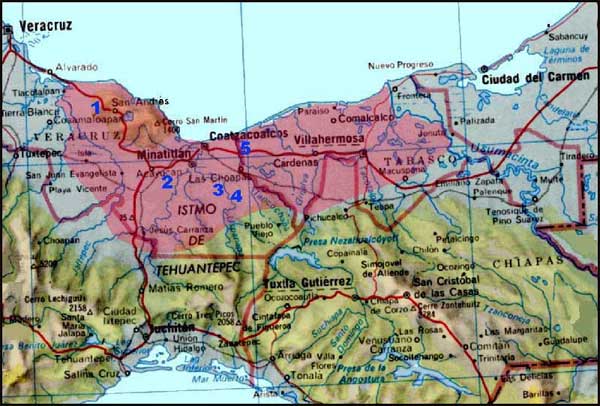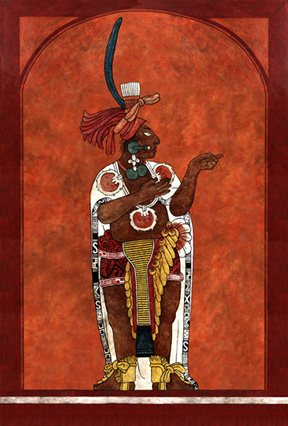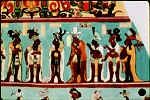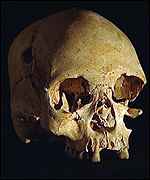 This is Lucia, a 20 year old African woman who died in South America over 11,000 years ago.
This is Lucia, a 20 year old African woman who died in South America over 11,000 years ago.
We know that Lucia was a member of the Olmec civilization. Her skull matches the African facial features of the Olmec heads. But what else do we know about Lucia, and what is being heavily debated about her
Skulls, head and related artifacts exhibited in Brazil's National Museum.
RIO DE JANEIRO— A human skull that is prominently displayed at the National Museum here has been attracting crowds and controversy in equal measure since it was first unveiled early this month. After two decades in storage, the fossilized cranium has now been identified by Brazilian scientists as the oldest human remains ever recovered in the Western Hemisphere. The skull is that of a young woman, nicknamed Luzia, who is believed to have roamed the savannah of south-central Brazil some 11,500 years ago.
Even more startling, a reconstruction of her cranium undertaken in Britain this year indicates that her features appear to be Negroid rather than Mongoloid, suggesting that the Western Hemisphere may have initially been settled not only earlier than thought, but by a people distinct from the ancestors of today's North and South American Indians. ''
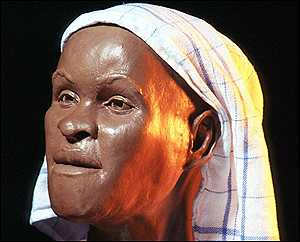 Life-like head created from Lucia's skull
Life-like head created from Lucia's skull
We can no longer say that the first colonizers of the Americas came from the north of Asia, as previous models have proposed,'' said Dr. Walter Neves, an anthropologist at the University of Sao Paulo, who made the initial discovery along with an Argentine colleague, Hector Pucciarelli. ''This skeleton is nearly 2,000 years older than any skeleton ever found in the Americas, and it does not look like those of Amerindians or North Asians.'' If the date is confirmed, the find could transform thinking about the peopling of the Americas. It may be some time before that work is completed, but meanwhile, archeologists here and abroad say the find is potentially very important.
Until Luzia, named as a playful homage to Lucy, the 3.2-million-year-old human ancestor found in Africa, the oldest known human remains recovered in the Western Hemisphere were those of a woman found in Buhl, Idaho, and repatriated to the Shoshone tribe in 1991. Radiocarbon dating tests have established the age of that skeleton as a bit more than 10,000 years old. Luzia's discovery at a location in the state of Minas Gerais called Lapa Vermelha is consistent, however, with recent findings made at the celebrated Monte Verde site in southern Chile. There, evidence of human habitation as early as 12,500 years ago, including stone tools and a footprint, has been uncovered, though no human remains have yet been found. The finds, along with recent discoveries in North America like those of the so-called Kennewick Man and Spirit Cave Man, are forcing a reassessment of long-established theories as to the settling of the Americas. Based on such evidence, Dr. Neves suggests that Luzia belonged to a nomadic people who began arriving in the New World as early as 15,000 years ago.
Quoted from Walter Neves in AAAS:
"A discussion of my long-term studies about the morphology of the first Americans includes comments from two North American colleagues to which I wish to respond.
Tom Dillehay, from the University of Kentucky, Lexington, says in the article that the results I obtained from Luzia (a member of the Olmecs of ancient Americas), which I suppose is the oldest human skeleton found in the Americas (dating from 11,000 to 11,500 million years ago), are "very preliminary," and that the archaeological evidence associated with the African-looking skull "is no different from what you see at sites with nonanomalous skeletons." And Leslie Freeman, from the University of Chicago, refers to "sparse skeletal evidence." Luzia, however, is just one of many South American Paleo-Indian skulls I have been investigating since the end of the 1980s. And all studies preceding and subsequent to the analysis of Luzia have generated the same result: The first South Americans have a marked morphological affinity with present-day Africans and Australians, showing no resemblance to present Asian Mongoloids or American Indians.
My studies with several South and North American collaborators have involved almost 15 specimens dated between 8500 and 11,500 thousand years ago from places as different as Central Brazil, Colombia, and Tierra del Fuego (Chile). Our analyses have also included more than 30 putative ancient South American specimens, some of them showing a high degree of fossilization. Different multivariate statistic tools have been used in these studies with complete convergent results.
Walter Neves
Laboratório de Estudos Evolutivos Humanos,
Departamento de Biologia,
Instituto de Biociências,
Universidade de São Paulo,
Caixa Postal 11461,
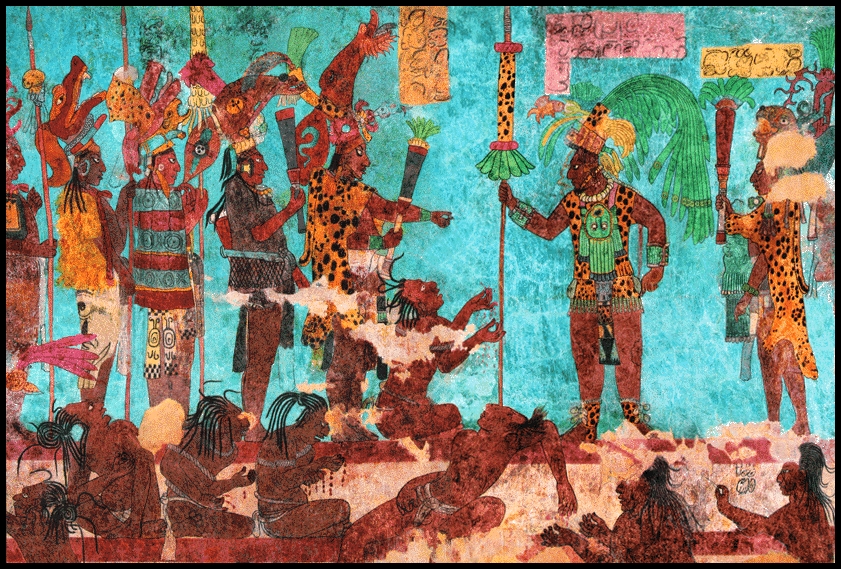
05422.970 São Paulo, SP, Brazil.
E-mail: waneves@ib.usp.br
|
|
|
Further Research on Lucia:
We don't know truly whether they came straight from Africa or from Australia until we have more evidence. What we do know is that they look 100% African. About one-third of Luzia's skeleton has been recovered, enough to indicate that she appears to have perished in an accident or perhaps even from an animal attack. She was in her 20's when she died and stood just under five feet tall.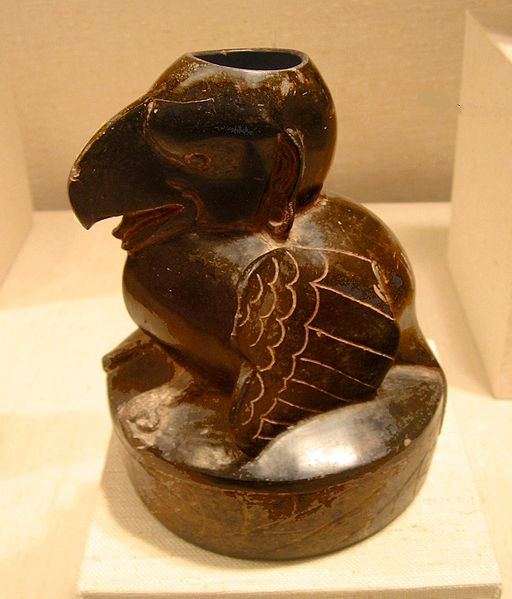
(right) Beautiful sculptures show advanced level of Olmec arts and culture
With that avenue of verification closed, Dr. Neves is making other efforts to determine the racial and other characteristics of Luzia. Early this year, a computerized image of Luzia's skull was sent to Richard Neave, a forensic specialist on the faculty of medicine at the University of Manchester in England, with a request that he reconstruct her face. ''It was in much better shape than many other forensic subjects we have had to do,'' Mr. Neave said in a telephone interview. What he ended up with when he finished was a face ''with the features one associates with Negroid skulls, particularly the nose'' and jaw. ''When you do this sort of work, it is very important to have no preconceived ideas,'' Mr. Neave said. ''I personally would stick my neck out and say it is conclusive support for his findings and demonstrates without any doubt at all'' that Luzia is of non-Mongoloid, Negroid origins.
